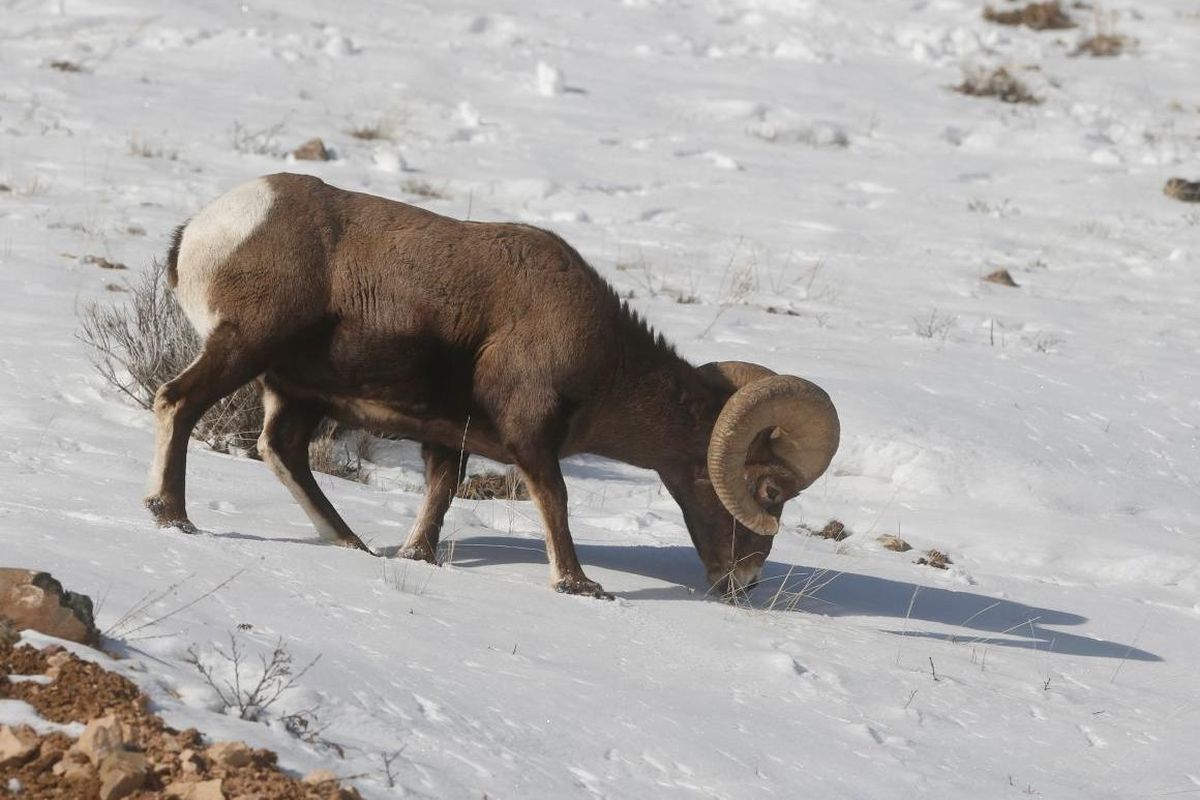Ice patch research shows wherever bighorns went, ancient humans followed

BILLINGS – Although ancient bighorn DNA analysis was a great way to link MSU professor Craig Lee’s research with fellow academics, he was more interested in what the dates of the skulls would reveal: continuous occupation of the Beartooth Mountains dating back 5,500 years.
Following those animals for thousands of years were ancient humans.
Perhaps the most impressive artifact Lee’s team has recovered from receding ice patches in the high mountains is an 11,500-year-old wooden dart shaft – proof that humans had been living in or visiting the high country for thousands of years. Another revealing artifact was a stone scraper. The nearest source for that type of rock was 350 miles to the east in northwestern South Dakota.
“It was a peopled landscape,” Lee said. “As soon as glacial ice came off, we had Clovis artifacts in Paradise Valley.”
Clovis is the name given to a certain style of stone spearhead dated to around 11,000 to 11,500 years ago.
“As glaciers retreated, people were right behind it,” Lee said.
The bighorn sheep’s role in Paleoindian society crops up frequently in western archaeology. Sheep traps have been identified in the rocky cliffs of the Gardiner Basin near Yellowstone National Park’s northern border. Bows made from bighorn ram’s horns were considered not only lethal, but excellent examples of native craftsmanship. A 7,700-year-old bighorn sheep hunting net made of juniper bark was recovered from northwestern Wyoming’s Sheep Mountain. It measured 150 feet long and 6 feet tall.
“Bighorn (sheep) may have been the most important large mammal resource for Great Basin groups,” a 1991 article on a Nevada bighorn archaeological site reported.
In addition to providing food, bones for tools and hide for clothing Paleoindians, the sheep – like other animals – also figured into myths, were depicted in cliffside petroglyphs and pictographs, and had their skulls and horns used in shaman, fasting, vision quest and hunting rituals.
“In eastern Utah, a bighorn headdress was recovered from a rock crevice near the Green River, and in northwestern Nevada, a bighorn sheep ram skull was uncovered at the center of a prehistoric house floor,” wrote Christine O’Neill in her 2015 California State University-Chico graduate thesis.
Montana archaeologist Larry Lahren writes in his book “Homeland” of a large bighorn skull painted with red ochre that was found inside a stone circle at 11,000 feet in Montana. His colleague Susan Hughes told him that she had concluded that Mummy Cave near Cody, Wyoming, was a seasonal bighorn sheep hunting camp from about from about 9,000 to 4,000 years ago.
For Lee, the continual search for mountain artifacts since he began such research in Alaska in 1997 is steadily building a more complete understanding and appreciation of how high elevations were used by Paleoindians. He also continues to fight an often-uphill battle to find funding to help with such research that, unlike a lot of other archaeology, is time sensitive. That’s because as the more fragile artifacts melt out of the ice patches, they can quickly be displaced, thereby losing context, or even deteriorating and vanishing.
Lee doesn’t want to be all gloom and doom, but admitted: “The older ice patches are in retreat.”
A collection of some of Lee’s artifacts that has been recovered from ice patches was on display at the Western Heritage Center from April 24-28.